Abstract
Vibrio cholerae and Escherichia coli were inoculated into membrane diffusion chambers and placed around two small coral reef islands in Puerto Rico and monitored for 5 days. Several chambers were also buried in the sands of one of the reefs. Both E. coli and V. cholerae densities declined by 2 orders of magnitude, as measured by direct particle counts with a Coulter Counter (Coulter Electronics, Inc., Hialeah, Fla.). However, the density of neither bacteria changed dramatically when the same samples were analyzed by epifluorescent direct counts. Differences in the two direct count methods were accounted for by changes in cell morphology that occurred in both bacteria after exposure to seawater. Morphological changes occurred more rapidly in E. coli compared with those in V. cholerae. Bacteria in chambers exposed to sediment did not show significant changes in morphology and had only a slight decline in density. Physiological activity declined by more than 40% for both bacteria within 24 h. The decline in activity was less severe in the sediments. Tropical coral reef sands and turtle grass beds were shown to be less stressful environments for V. cholerae and E. coli than would have been predicted from temperature and microcosm studies. V. cholerae can survive the in situ conditions of a tropical coral reef and could become a source of bacterial contamination for fish and shellfish in this environment. The simultaneous monitoring of E. coli levels established that this bacteria can not be used as an indicator of V. cholerae or other fecal-borne pathogens in coral reef environments because of the greater stress these environments put on E. coli. Both bacteria could be of greater public health importance in tropical marine areas than previously imagined.
Full text
PDF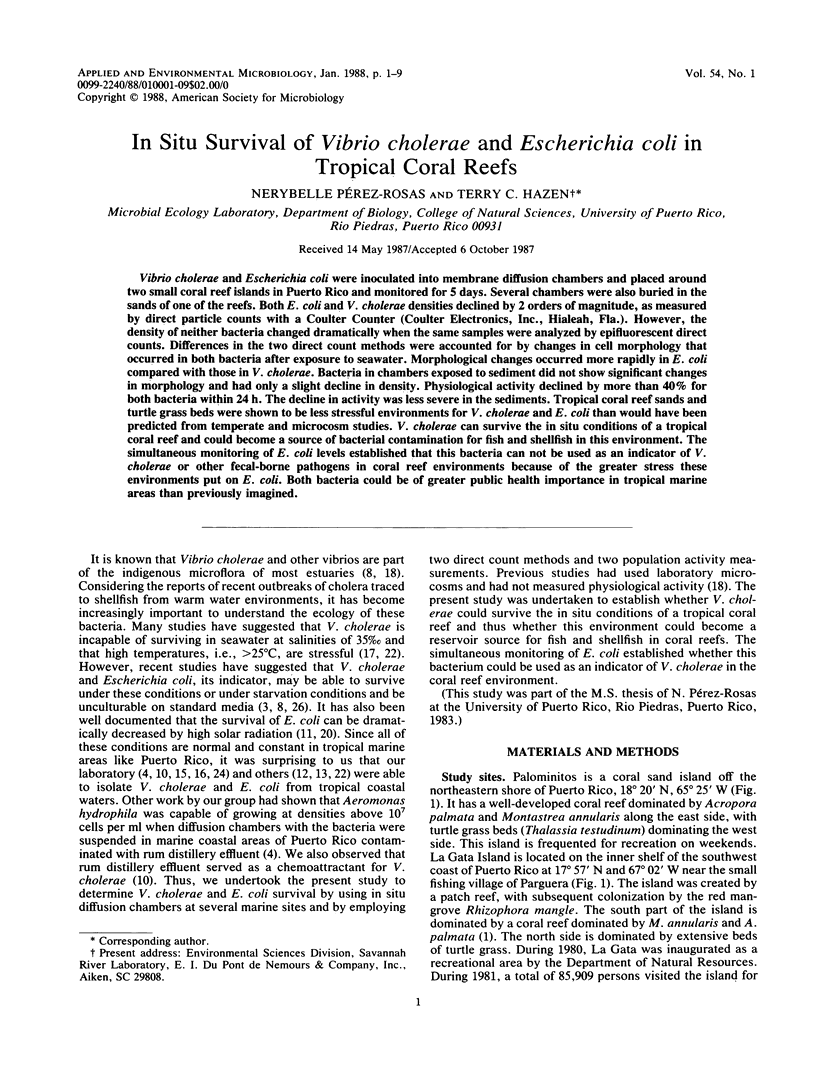
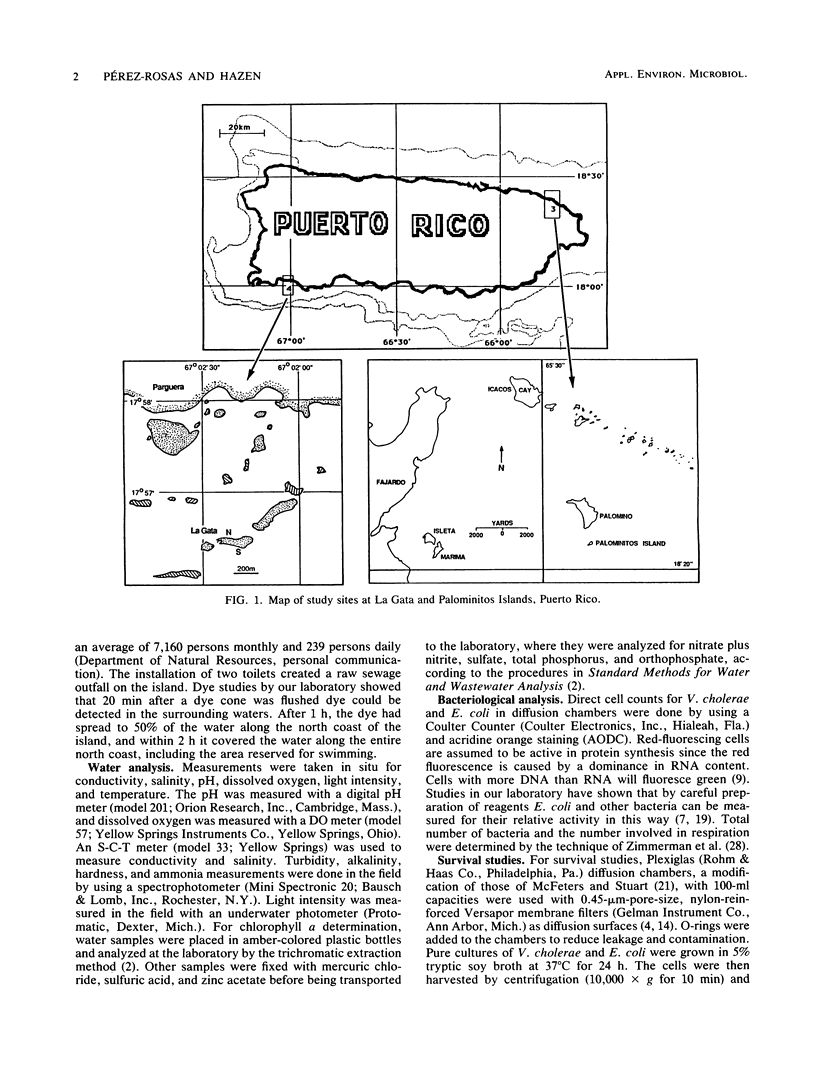
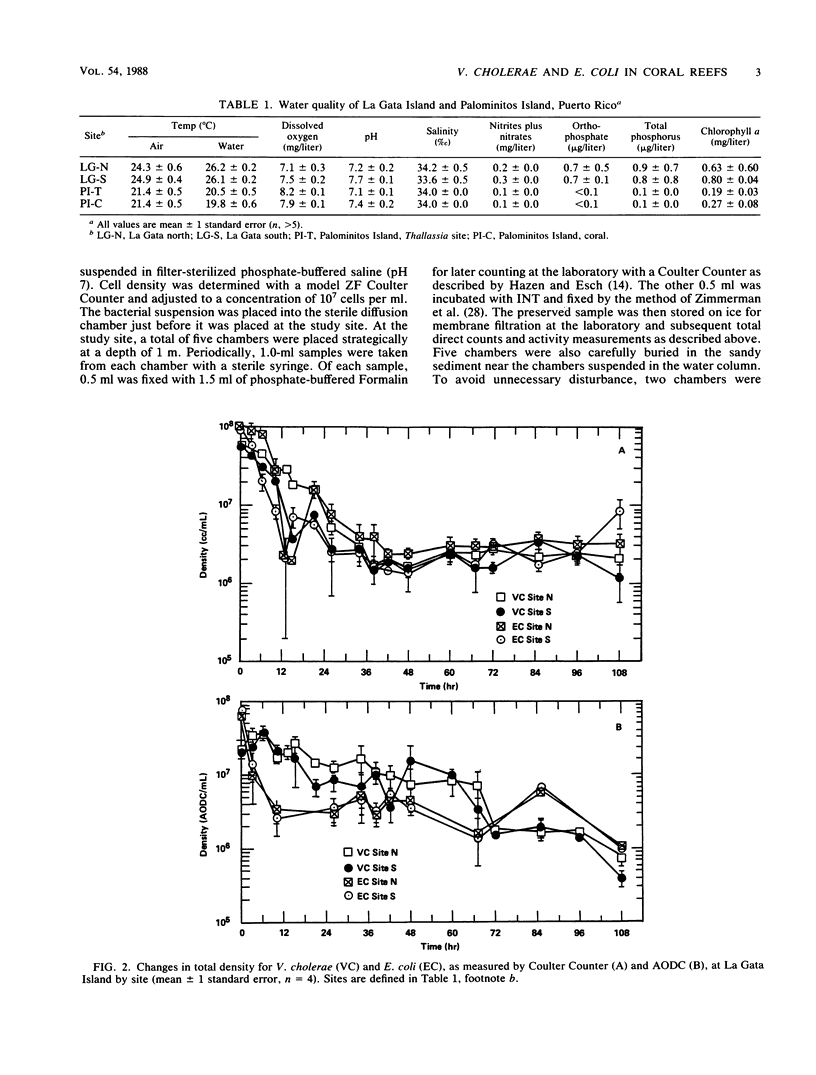
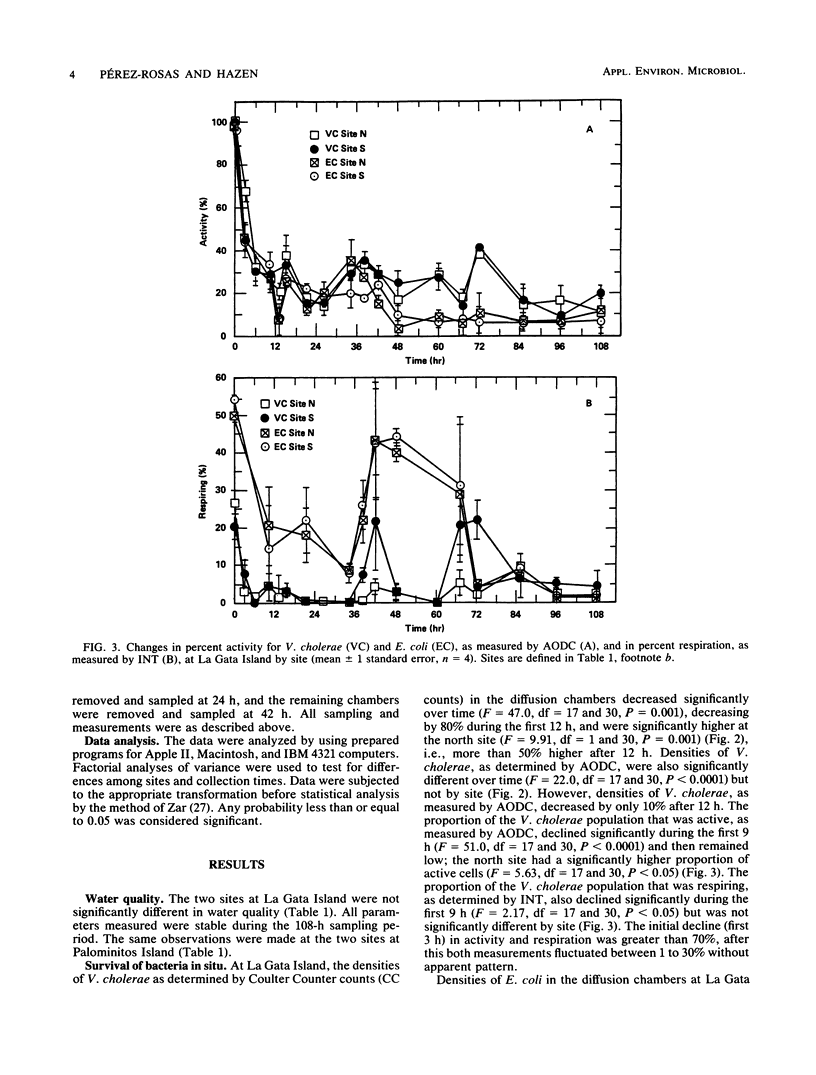
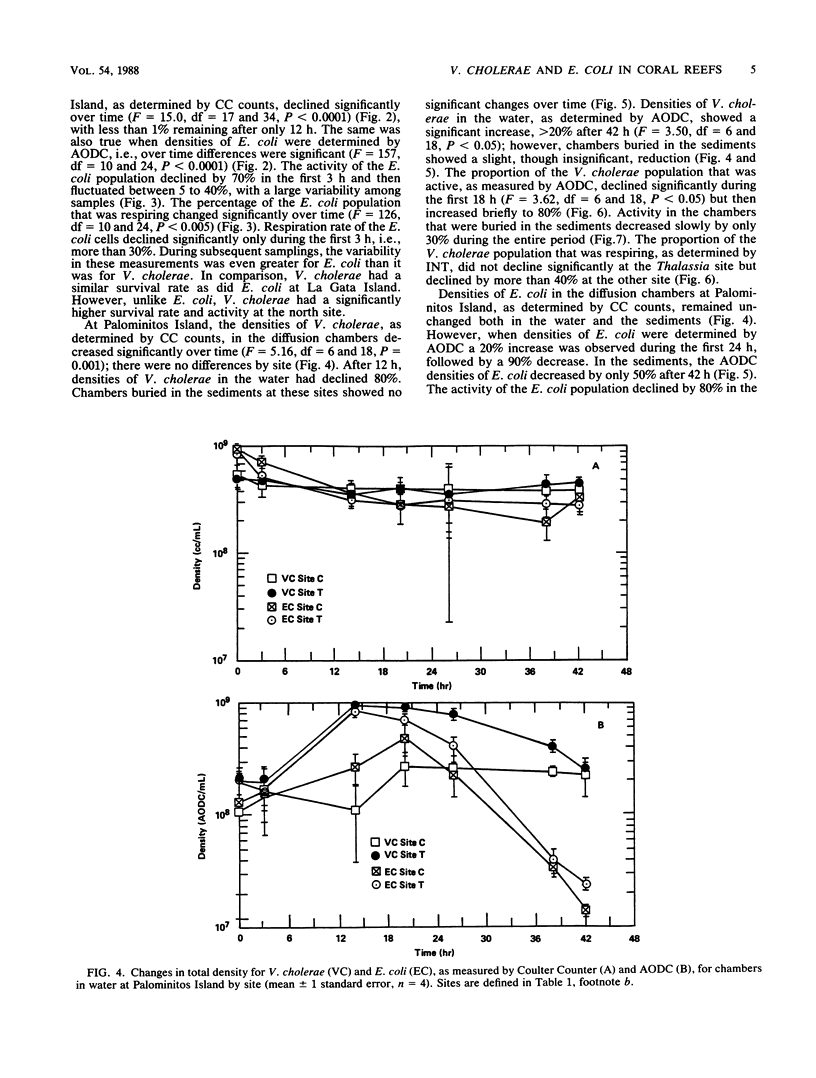
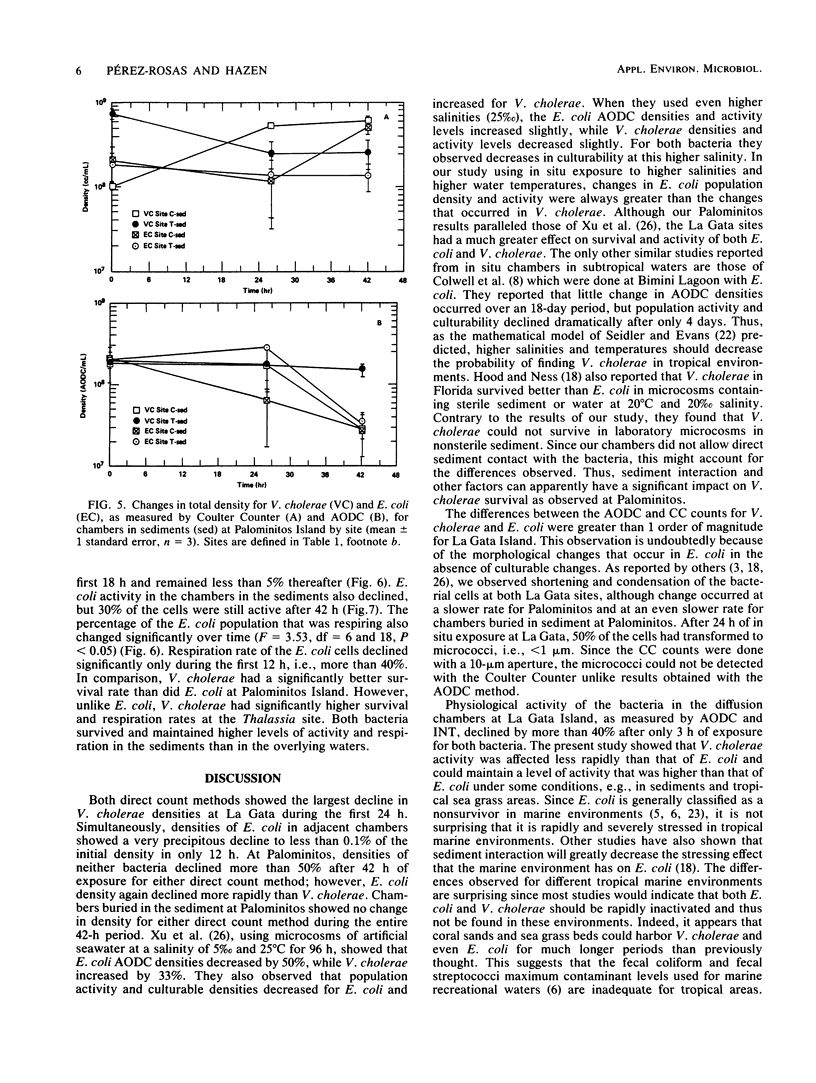
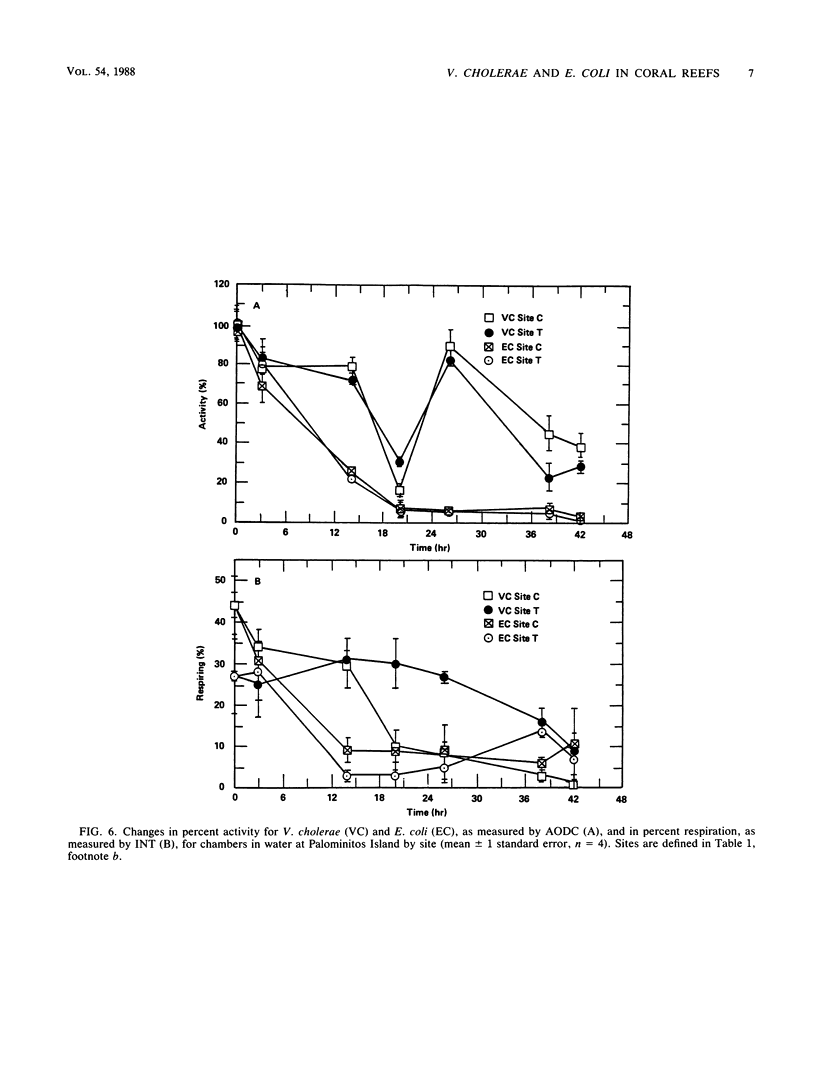
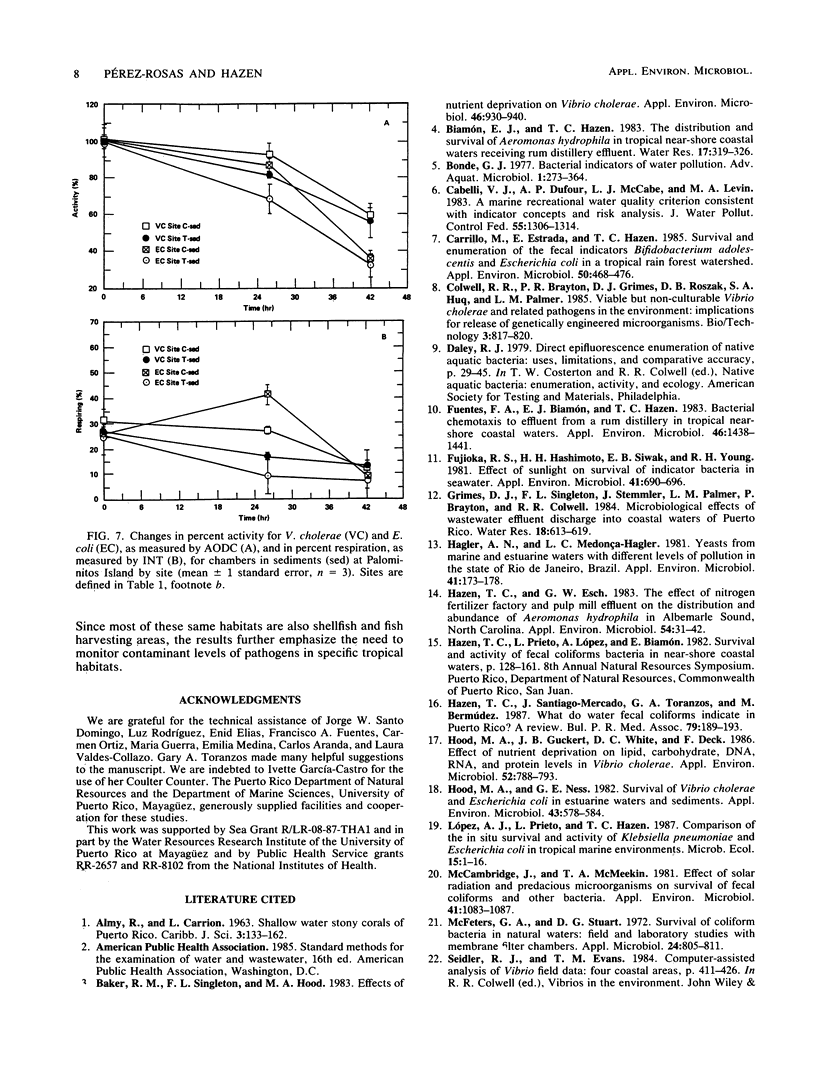
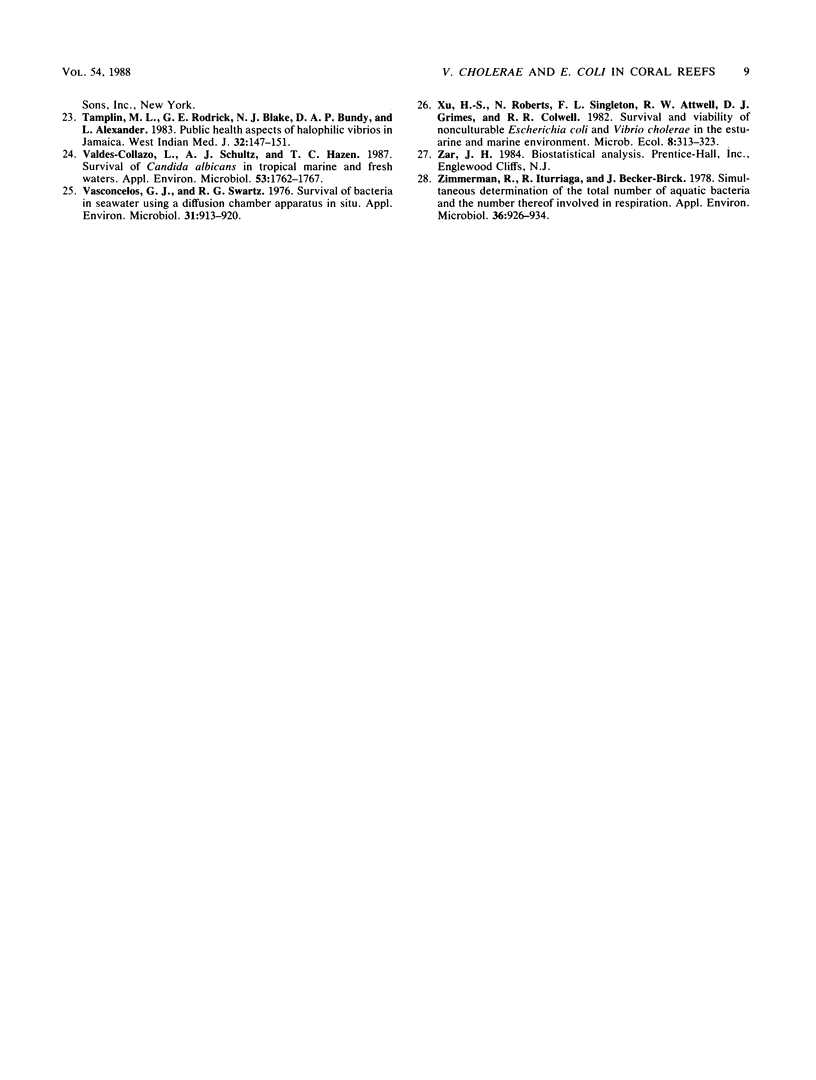
Selected References
These references are in PubMed. This may not be the complete list of references from this article.
- Baker R. M., Singleton F. L., Hood M. A. Effects of nutrient deprivation on Vibrio cholerae. Appl Environ Microbiol. 1983 Oct;46(4):930–940. doi: 10.1128/aem.46.4.930-940.1983. [DOI] [PMC free article] [PubMed] [Google Scholar]
- Carrillo M., Estrada E., Hazen T. C. Survival and enumeration of the fecal indicators Bifidobacterium adolescentis and Escherichia coli in a tropical rain forest watershed. Appl Environ Microbiol. 1985 Aug;50(2):468–476. doi: 10.1128/aem.50.2.468-476.1985. [DOI] [PMC free article] [PubMed] [Google Scholar]
- Fuentes F. A., Biamon E. J., Hazen T. C. Bacterial chemotaxis to effluent from a rum distillery in tropical near-shore coastal waters. Appl Environ Microbiol. 1983 Dec;46(6):1438–1441. doi: 10.1128/aem.46.6.1438-1441.1983. [DOI] [PMC free article] [PubMed] [Google Scholar]
- Fujioka R. S., Hashimoto H. H., Siwak E. B., Young R. H. Effect of sunlight on survival of indicator bacteria in seawater. Appl Environ Microbiol. 1981 Mar;41(3):690–696. doi: 10.1128/aem.41.3.690-696.1981. [DOI] [PMC free article] [PubMed] [Google Scholar]
- Hagler A. N., Mendonça-Hagler L. C. Yeasts from marine and estuarine waters with different levels of pollution in the state of rio de janeiro, Brazil. Appl Environ Microbiol. 1981 Jan;41(1):173–178. doi: 10.1128/aem.41.1.173-178.1981. [DOI] [PMC free article] [PubMed] [Google Scholar]
- Hazen T. C., Esch G. W. Effect of effluent from a nitrogen fertilizer factory and a pulp mill on the distribution and abundance of Aeromonas hydrophila in Albemarle Sound, North Carolina. Appl Environ Microbiol. 1983 Jan;45(1):31–42. doi: 10.1128/aem.45.1.31-42.1983. [DOI] [PMC free article] [PubMed] [Google Scholar]
- Hood M. A., Guckert J. B., White D. C., Deck F. Effect of nutrient deprivation on lipid, carbohydrate, DNA, RNA, and protein levels in Vibrio cholerae. Appl Environ Microbiol. 1986 Oct;52(4):788–793. doi: 10.1128/aem.52.4.788-793.1986. [DOI] [PMC free article] [PubMed] [Google Scholar]
- Hood M. A., Ness G. E. Survival of Vibrio cholerae and Escherichia coli in estuarine waters and sediments. Appl Environ Microbiol. 1982 Mar;43(3):578–584. doi: 10.1128/aem.43.3.578-584.1982. [DOI] [PMC free article] [PubMed] [Google Scholar]
- McCambridge J., McMeekin T. A. Effect of solar radiation and predacious microorganisms on survival of fecal and other bacteria. Appl Environ Microbiol. 1981 May;41(5):1083–1087. doi: 10.1128/aem.41.5.1083-1087.1981. [DOI] [PMC free article] [PubMed] [Google Scholar]
- McFeters G. A., Stuart D. G. Survival of coliform bacteria in natural waters: field and laboratory studies with membrane-filter chambers. Appl Microbiol. 1972 Nov;24(5):805–811. doi: 10.1128/am.24.5.805-811.1972. [DOI] [PMC free article] [PubMed] [Google Scholar]
- Tamplin M. L., Rodrick G. E., Blake N. J., Bundy D. A., Alexander L. Public health aspects of halophilic Vibrios in Jamaica. West Indian Med J. 1983 Sep;32(3):147–151. [PubMed] [Google Scholar]
- Valdes-Collazo L., Schultz A. J., Hazen T. C. Survival of Candida albicans in tropical marine and fresh waters. Appl Environ Microbiol. 1987 Aug;53(8):1762–1767. doi: 10.1128/aem.53.8.1762-1767.1987. [DOI] [PMC free article] [PubMed] [Google Scholar]
- Vasconcelos G. J., Swartz R. G. Survival of bacteria in seawater using a diffusion chamber apparatus in situ. Appl Environ Microbiol. 1976 Jun;31(6):913–920. doi: 10.1128/aem.31.6.913-920.1976. [DOI] [PMC free article] [PubMed] [Google Scholar]
- Zimmermann R., Iturriaga R., Becker-Birck J. Simultaneous determination of the total number of aquatic bacteria and the number thereof involved in respiration. Appl Environ Microbiol. 1978 Dec;36(6):926–935. doi: 10.1128/aem.36.6.926-935.1978. [DOI] [PMC free article] [PubMed] [Google Scholar]


